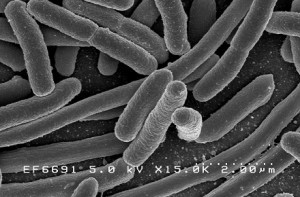 Press release from the European Centre for Disease Prevention and Control (ECDC) and the European Food Safety Authority (EFSA):
Press release from the European Centre for Disease Prevention and Control (ECDC) and the European Food Safety Authority (EFSA):
On 22 May 2011, Germany reported a significant increase in the number of patients with haemolytic uremic syndrome (HUS) and bloody diarrhoea caused by Shiga toxin-producing E. coli (STEC). Since 2 May, over 400 HUS cases and over 1000 STEC cases been reported in Germany.
Additional HUS and STEC cases linked to the outbreak have been reported in several other EU/EEA countries; Austria, Czech Republic, Denmark, France, the Netherlands, Norway, Poland, Spain, Sweden, and United Kingdom. While HUS cases are usually observed in children under 5 years of age, over 80% are adults in this outbreak, with a clear predominance of women (about 68%).
The source of the outbreak has not yet been confirmed and intensive investigations are ongoing. German health authorities suspect that contaminated food is the vehicle of the outbreak, with current investigations focusing on the consumption of raw tomatoes, fresh cucumbers and lettuce.
In the specific case of the present outbreak of STEC in Germany, the precautionary recommendation was made by the Federal Institute for Risk Assessment to avoid consumption of raw vegetables like cucumbers, tomatoes, and lettuce in the northern part of Germany until the source of the outbreak has been identified.
- Germany advises consumers to continue to refrain from eating raw tomatoes, cucumbers and green salads PDF here – Bundesinstitut für Risikobewertung (BfR)
What do the terms STEC, VTEC and EHEC mean?
All humans and animals carry the bacteria called Escherichia coli (E. coli) in their intestines – they are part of our normal flora and usually harmless. However, there are particular strains of E. coli that are capable of producing toxins. These strains are called STEC/VTEC (shiga toxin or verotoxin –producing E. coli) or EHEC (enterohaemorrhagic E. coli), and their toxins have the potential to cause severe, bloody diarrhoea, which may in some cases result in an acute kidney failure requiring intensive care. There are several different strains of STEC and their identification can be used to more precisely find the source of a particular outbreak.
How do I become ill?
Transmission of STEC infection mainly occurs through eating or handling contaminated food and contact with infected animals. Further person-to-person transmission is possible among close contacts (families, childcare centres, nursing homes, etc). A wide variety of food has previously been implicated in outbreaks as sources of infection, including undercooked beef and other meat, unpasteurized milk, a variety of fresh produce (e.g. cucumber, sprouts, spinach, and lettuce), unpasteurized apple juice and cheese. A very small number of STEC bacteria are sufficient to cause infection in humans.
How can I avoid getting ill?
Despite the many measures in place, consumers can be exposed to infectious agents through contaminated food, in particular in raw or undercooked foodstuffs. However, there are some simple precautions that can be applied to reduce the risk of getting ill from potentially contaminated food items, animals or another ill person. Consumers can often reduce the risk of becoming ill in the home by following good food handling and hand hygiene practices.
Good personal hand hygieneWash your hands properly with soap, rinse carefully and dry using disposable kitchen towel or a textile towel (to be washed regularly at 60°C)
- before preparing, serving, or eating food
- after using the toilet or changing nappies (diapers)
- after handling raw vegetables, roots or meat
- after contact with farm animals or after visiting a farm
- after any contact with faeces from household pets
Food handling
- Any person with diarrhoea or vomiting should restrain from handling food
- Meat, including minced meat, should be thoroughly cooked.
- All fruits with skin should be peeled and then rinsed under running potable water
- All vegetables should be washed properly under running potable water, especially those that will not be cooked before consumption
- Peel all root vegetables and rinse them under running potable water
- Thorough cooking of vegetables and meat destroys disease causing bacteria and viruses
- Avoid cross contamination i.e. spreading bacteria from a raw food item to a ready-to-eat or cooked food item, by for example, using separate cutting boards for raw meat and cooked meat or fresh vegetables and wash the cutting board with soap in between the handling of raw and ready-to-eat food.
For more information: See World Health Organization’s “Five keys to safer food” PDF here
What should I do if I develop diarrhoeal symptoms?
If you develop any diarrhoeal symptoms, and you work in a kitchen that prepares food for public, you should contact occupational health care and restrain from handling food.
If you, despite all precautions, develop bloody diarrhoea, you should seek medical care. When you have developed diarrhoeal symptoms, pay careful attention to your hand hygiene and wash your hands with soap and rinse under running potable water immediately after toilet visits.
- DG Sanco: Request for urgent scientific and technical assistance PDF here
- EFSA acceptance letter PDF here
Source: European Food Safety Authority




